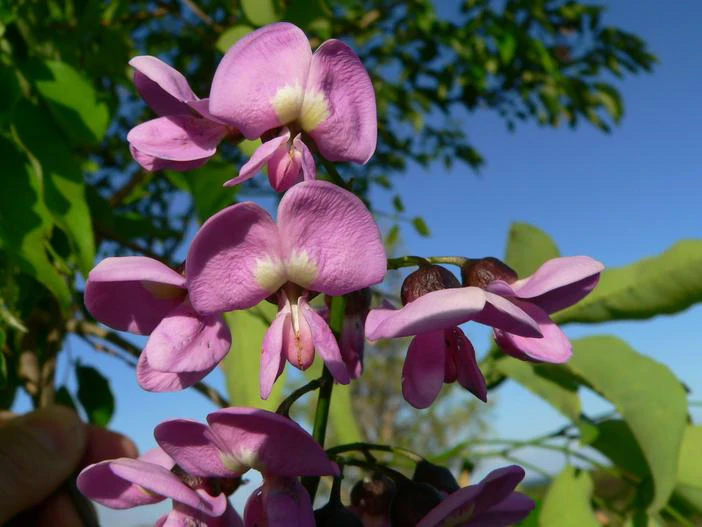Dotted Lonchocarpus
(Lonchocarpus punctatus)
Dotted Lonchocarpus (Lonchocarpus punctatus)
/
/

Pancrat
CC BY-SA 3.0
Image By:
Pancrat
Recorded By:
Copyright:
CC BY-SA 3.0
Copyright Notice:
Photo by: Pancrat | License Type: CC BY-SA 3.0 | License URL: https://creativecommons.org/licenses/by-sa/3.0 | Uploader: Pancrat | Publisher: Wikipedia Commons





Estimated Native Range
Climate Requirements for Erie, Pennsylvania
| This Plant | Your Site | Plant Suitability for Your Location | ||
|---|---|---|---|---|
| • Precipitation | 14" - 169" | 43" | Aquatic | Aquatic |
| • High Temp. | 79°F - 98°F | 81°F | Your summer temperatures are normal for this plant. | Excellent |
| • Low Temp. | 35°F - 73°F | 19°F | Your winter temperatures may be too cold for this plant | Too cold |
This plant should grow very well at your location but requires an aquatic environment.
Summary
Lonchocarpus punctatus, commonly known as the Dotted Lonchocarpus, is a perennial tree native to the tropical rainforests of Central and South America, particularly in regions with high humidity and consistent rainfall. It is a member of the legume family, Fabaceae, and can grow to a height of 30-50 feet (9-15 meters) with a canopy spread of 20-30 feet (6-9 meters). The tree is characterized by its dense, rounded crown and smooth, gray bark. It produces clusters of small, purple flowers that are quite showy when in bloom, typically during the wet season. The flowers are followed by distinctive, woody seed pods.
The Dotted Lonchocarpus is valued for its ornamental flowers and as a shade tree in tropical landscapes. It is used in reforestation projects and as a living fence in agricultural settings due to its fast growth and dense foliage. In cultivation, it requires a consistently moist, well-drained soil and thrives in full sun to partial shade. While it is not commonly found in the average home garden, it can be a striking addition to botanical gardens and tropical arboreta. Potential problems include susceptibility to root rot in poorly drained soils and pests such as leaf-cutting ants in its native range.CC BY-SA 4.0
The Dotted Lonchocarpus is valued for its ornamental flowers and as a shade tree in tropical landscapes. It is used in reforestation projects and as a living fence in agricultural settings due to its fast growth and dense foliage. In cultivation, it requires a consistently moist, well-drained soil and thrives in full sun to partial shade. While it is not commonly found in the average home garden, it can be a striking addition to botanical gardens and tropical arboreta. Potential problems include susceptibility to root rot in poorly drained soils and pests such as leaf-cutting ants in its native range.CC BY-SA 4.0
Plant Description
- Plant Type: Tree
- Height: 30-40 feet
- Width: 20-30 feet
- Growth Rate: Moderate
- Flower Color: Purple
- Flowering Season: Summer
- Leaf Retention: Deciduous
Growth Requirements
- Sun: Full Sun, Part Shade
- Water: Medium
- Drainage: Medium
Common Uses
Bee Garden, Bird Garden, Border Plant, Butterfly Garden, Low Maintenance
Natural Habitat
Native to the tropical rainforests of Central and South America, particularly in regions with high humidity and consistent rainfall
Other Names
Common Names:
Scientific Names: Lonchocarpus punctatus, Dalbergia punctata, Lonchocarpus benthamianus, Lonchocarpus caribaeus, Lonchocarpus violaceus
GBIF Accepted Name: Lonchocarpus punctatus